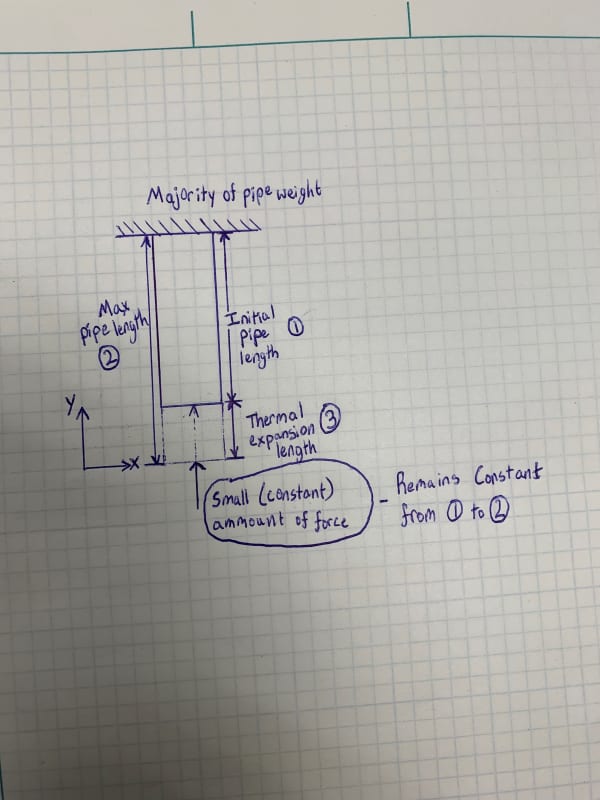I am working on a project to support a large pipe during thermal expansion. Most of the weight will be supported from the top, but a constant portion of the weight needs to be supported from the bottom to minimize permanent thermal expansion without causing a buckle at the top. I originally thought about using a constant spring and that still is likely the best option, but they are expensive and bulky. My next thought is to use hydraulic/pneumatic cylinders with some type of valve. I am still a student so I am pretty new to engineering design and have not worked with hydraulic and pneumatic cylinders much so I am wondering if this would be a possible solution or if these cylinders are commonly used for this purpose. If anyone has any other recommendations, please share if you'd like to.
Thanks,
T
Thanks,
T

